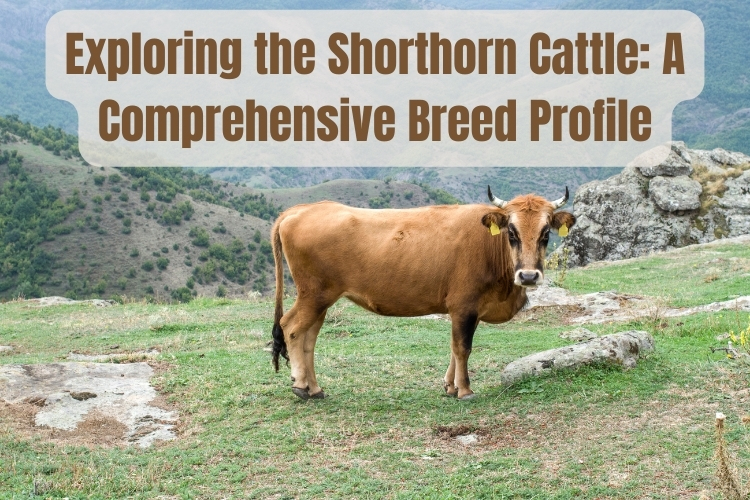The Shorthorn cattle breed, with its deep roots in England, has evolved into a versatile and globally recognized breed known for its dual-purpose utility in meat and milk production.
Characterized by their distinctive coat colors and docile temperament, Shorthorn cattle have become a staple in the agricultural industry, prized for their adaptability to various environments, ease of handling, and contributions to crossbreeding programs.
In this comprehensive cattle breed profile, we will help you delve into the origins, physical characteristics, behavioral traits, economic significance, and health aspects of Shorthorn cattle, offering valuable insights for farmers, breeders, and cattle enthusiasts alike.
Key Takeaways
- Shorthorn cattle are a dual-purpose breed from England, valued for their meat quality, milk production, and adaptability to different climates.
- They exhibit distinctive red, white, or roan coat coloration, medium to large size, and good feed efficiency with a moderate to fast growth rate.
- Known for their docility, high maternal instincts, and ease of handling, Shorthorn cattle are well-suited for diverse environments and farming practices.
- The breed’s popularity and market demand stem from its dual-purpose utility, contributing to its economic significance and role in crossbreeding programs.
- Shorthorn cattle have a reputation for longevity and disease resistance, which is economically beneficial for reducing veterinary costs and extending productive lifespan.
Breed Origins and Historical Significance
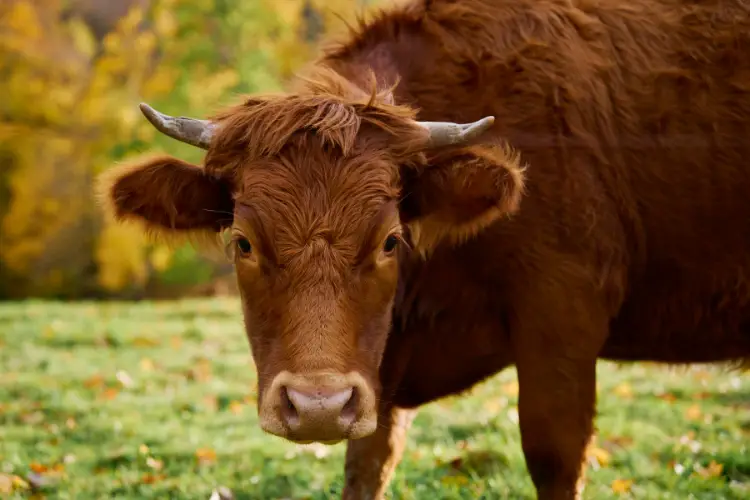
Ancestral Roots in England
The Shorthorn breed boasts a rich heritage that traces back to the verdant pastures of northeastern England in the late 18th century. The breed’s development was marked by a focus on dual-purpose qualities, catering to both dairy and beef production.
This adaptability contributed to its early popularity among farmers. Key figures in the breed’s history include the Colling brothers, Charles and Robert, who are credited with establishing the foundational bloodlines.
Their meticulous record-keeping and selective breeding practices set the standard for Shorthorn genetics. The brothers’ influence is evident in the Shorthorn Herd Book, first published in 1822, which remains a critical resource for breeders.
- The Colling brothers’ Darlington farm became the epicenter of Shorthorn breeding.
- Early Shorthorn cattle were known for their hardiness and quality meat.
- The breed’s versatility saw its adoption across various regions of England.
The Shorthorn’s ancestral roots in England laid the groundwork for its global dissemination, shaping the landscape of cattle breeding worldwide.
Development of the Shorthorn Breed
The Shorthorn breed, as we recognize it today, has undergone significant evolution since its origins. Originating from the Teeswater and Durham cattle of North East England, the breed has been refined over the last two centuries to meet the demands of both beef and dairy industries.
The breed’s adaptability and dual-purpose nature have made it a cornerstone in the development of other cattle breeds. Shorthorns are known for their distinctive coat colors, ranging from red, white, to roan, and their moderate to fast growth rate.
Their good feed efficiency has contributed to their popularity, particularly in regions like Georgia, where they thrive in various climates and forage types. Below is a summary of the Shorthorn’s key characteristics:
- Origin: England
- Size: Medium to large
- Coat Color: Red, white, or roan
- Growth Rate: Moderate to fast
- Feed Efficiency: Good
The breed’s influence extends beyond its own lineage, as seen in the creation of the Red Angus breed, which involved crossing Aberdeen Angus cattle with red-colored Shorthorn cattle. This crossbreeding has resulted in a breed known for its high-quality meat and maternal instincts.
Influence on Other Cattle Breeds
The Shorthorn breed has had a profound impact on the development of other cattle breeds around the world. Their genetic traits have been sought after for crossbreeding, enhancing the qualities of numerous other breeds.
The heritage of the Shorthorn is evident in the way they have contributed to the improvement of carcass quality, feed efficiency, and reproductive performance in other cattle.
Shorthorns have been instrumental in the creation of new breeds, such as the Beef Shorthorn, which is renowned for its meat quality.
They have also been crossed with other breeds to impart their desirable traits, such as docility and milk production, to create hybrids that meet specific market demands. The following list highlights some of the breeds influenced by Shorthorns:
- Beef Shorthorn
- Santa Gertrudis
- Maine-Anjou
- Simmental
The legacy of the Shorthorn breed continues to be celebrated by organizations such as the Heritage Shorthorn Society, which acknowledges the breed’s unique contributions to the cattle industry.
Physical Characteristics and Growth

Distinctive Coat Coloration
The Shorthorn breed is celebrated for its unique and varied coat colors, which not only contribute to its aesthetic appeal but also serve as a marker of the breed’s identity. The most common colors are red, white, or roan, each with its own significance and popularity among breeders.
The roan coat, in particular, is a blend of red and white hairs, creating a distinctive pattern that is highly valued in the show ring and among cattle enthusiasts.
The Whitebred Shorthorn, a variant primarily found in the border regions between England and Scotland, is noted for its moderate hair length and pure white coat.
This breed’s adaptability to various climates and its ability to thrive on a range of forage types make it popular in regions like Georgia. Below is a summary of the Shorthorn’s coat coloration:
- Red: A solid, deep color ranging from light to dark shades.
- White: A pure, bright color, often associated with the Whitebred Shorthorn.
- Roan: A mix of red and white hairs, creating a speckled appearance that is unique to the breed.
Size and Body Composition
Shorthorn cattle are renowned for their medium to large size and well-muscled frames, which contribute to their dual-purpose utility. Mature Shorthorn cows typically stand at an average height of 140 cm at the tailhead and possess a weight range that reflects their robust body composition.
The breed’s muscular build is not only a hallmark of its physical appearance but also a key factor in its meat production capabilities. Shorthorns are known for their marbled, tender, and flavorful meat, a trait that is highly sought after in the beef industry.
Their body type, characterized by a broad chest and strong musculature, is indicative of their meat quality.
Below is a comparison of Shorthorn cattle size with other breeds:
| Breed | Average Weight (Cows) | Average Height (Cows) |
|---|---|---|
| Dairy Shorthorn | 640 to 680 kg | 140 cm |
| Charolais | 1,200 to 1,400 kg | 150 to 155 cm |
| Simmental | 1,200 to 1,400 kg | 150 to 155 cm |
Italics are used to emphasize the importance of the breed’s size and composition in relation to its economic value in meat production.
Growth Rate and Feed Efficiency

Shorthorn cattle are renowned for their impressive growth rates and exceptional feed efficiency, which are crucial for the economic viability of beef production. Faster growth rates and better feed efficiency mean quicker and more cost-effective production cycles for farmers.
This is particularly important in light of recent market volatility, where beef prices and feed costs can significantly impact profitability. The ability to convert feed into body mass efficiently not only reduces the costs associated with raising cattle but also contributes to the sustainability of beef production.
The Shorthorn breed’s performance in this area is supported by data from the Beef Shorthorn Cattle Society Journal, which indicates a positive trend in sales and an increase in the number of animals sold.
| Factor | Importance for Shorthorn Cattle |
|---|---|
| Growth Rate | Rapid weight gain for early market readiness |
| Feed Efficiency | Optimal conversion of feed to body mass |
| Carcass Quality | High-quality meat with desirable characteristics |
| Reproductive Performance | Efficient breeding cycles and calving ease |
These factors combined make Shorthorns a preferred choice for farmers who prioritize efficiency and quality in their beef production operations.
Behavioral Traits and Temperament
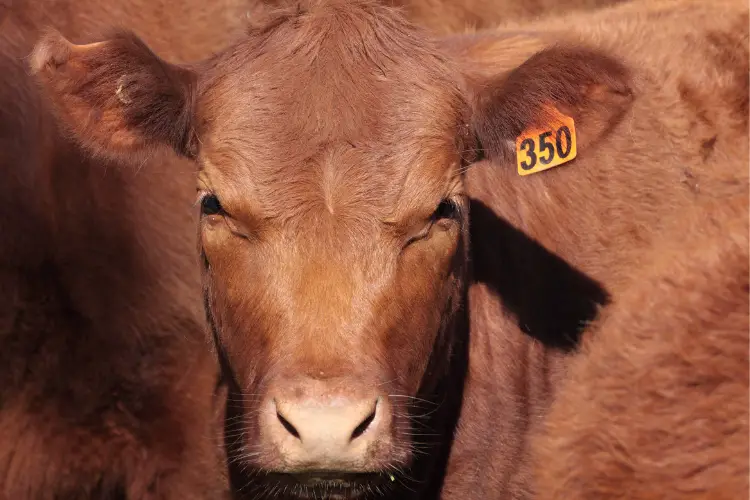
Docility and Ease of Handling
The Beef Shorthorn is renowned for its exceptional temperament, making it a favorite among farmers and ranchers. The breed’s docility ensures a lower risk of injury and stress, both for the cattle and the handlers, which is a significant advantage in daily farm operations.
This ease of handling can be attributed to the breed’s inherent calmness and willingness to interact with people. Temperament is not just a desirable trait for safety; it also has implications for meat quality.
Stress-free cattle typically produce better quality meat, which is a key factor in the marketability of Beef Shorthorn. The following points highlight the benefits of the breed’s manageability:
- Reduction in stress for animals and handlers
- Improved safety during husbandry practices
- Positive impact on meat quality
- Enhanced overall farm efficiency
Maternal Instincts and Reproductive Performance
Shorthorn cattle are renowned for their exceptional maternal instincts, which are crucial for the success of any beef production system. The fertility rate, calving interval, and ease of calving are key indicators of a cow’s maternal ability and directly impact the herd’s sustainability and efficiency.
Reproductive performance is a significant factor in the economic value of Shorthorn cattle. High reproductive efficiency ensures a steady supply of calves and reduces the need for labor-intensive interventions.
The breed’s natural propensity for calving ease not only increases calf survival rates but also contributes to the overall profitability of the farm.
Here is a brief overview of the reproductive traits of Shorthorn cattle:
- Fertility rate: High
- Calving interval: Optimal
- Calving ease: Excellent
These traits, combined with the breed’s calm temperament, make Shorthorn cattle a preferred choice for producers looking for reliable and productive maternal stock.
Adaptability to Various Environments
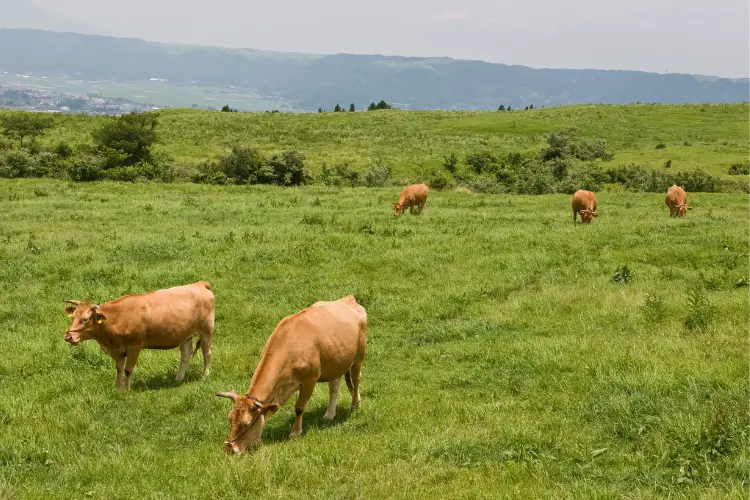
Shorthorn cattle are renowned for their remarkable adaptability to a wide range of environmental conditions. This trait is particularly beneficial for farmers who may face diverse climatic challenges. Their ability to thrive in both hot and cold climates makes them a versatile choice for many agricultural settings.
The breed’s adaptability is reflected in its heat tolerance, resistance to local diseases, and efficient utilization of available grazing resources. For instance, in Georgia, Shorthorns have shown a high degree of adaptability, which is crucial for maintaining productivity throughout the year.
- Heat Tolerance: Shorthorns maintain productivity even in warmer climates.
- Disease Resistance: They exhibit resilience against local diseases, reducing veterinary costs.
- Grazing Efficiency: The breed makes the most of the available forage, supporting sustainable farming practices.
Economic and Agricultural Value
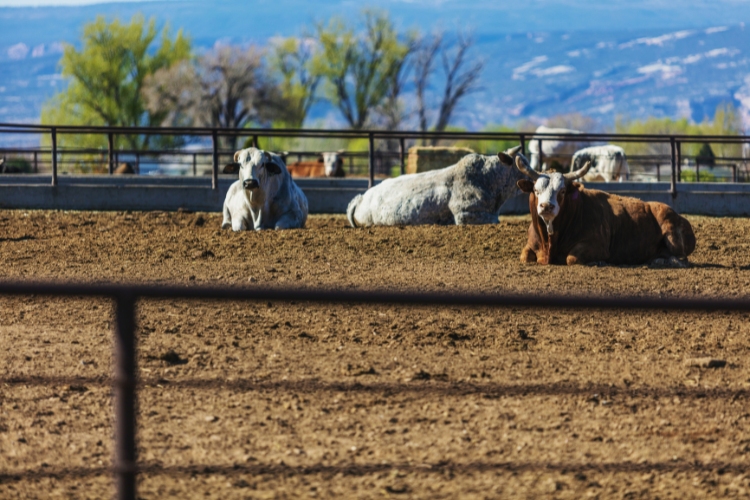
Dual-Purpose Utility: Meat and Milk Production
Shorthorn cattle are renowned for their dual-purpose utility, excelling in both meat and milk production. Their feed efficiency means quicker and more cost-effective production cycles for farmers.
The breed’s carcass quality is notable, with factors such as marbling, tenderness, and flavor contributing to its high market value. Additionally, the yield of usable meat is a significant consideration for beef production.
The breed’s milking capabilities are also impressive, with the milk being rich in nutrients such as phosphorus, fats, calcium, and potassium, which are beneficial for maintaining blood pressure and controlling bad cholesterol.
This nutritional profile, coupled with the breed’s reproductive performance and calving ease, makes Shorthorns a valuable asset in the agricultural sector. Key aspects of Shorthorn cattle in terms of meat and milk production include:
- Good feed efficiency
- High-quality meat with excellent marbling and flavor
- Nutrient-rich milk beneficial for health
- Strong reproductive performance and ease of calving
Breed Popularity and Market Demand
The Shorthorn cattle’s appeal in the agricultural sector is evident through its robust market demand. High demand for Shorthorns is reflected in the market prices, which often translates to increased profitability for farmers.
This demand is not only limited to local markets but extends nationally, influencing the availability of breeding stock and the marketability of the beef produced.
Breed-specific associations play a crucial role in nurturing this popularity. In regions like Georgia, the activity level of these organizations provides essential support and resources to breeders and producers, further bolstering the breed’s presence in the market.
The Beef Shorthorn, in particular, has seen a surge in popularity, becoming the native breed of choice among beef producers. This is attributed to the concerted efforts of societies and associations in promoting the breed’s traditional characteristics.
| Factor | Influence on Popularity |
|---|---|
| Market Price | Directly affects profitability |
| Breed Associations | Provide support and resources |
| National Demand | Expands marketability |
The breed’s longevity and disease resistance also contribute to its popularity, as these traits reduce replacement costs and veterinary expenses, making Shorthorns a practical choice for sustainable beef production.
Contribution to Crossbreeding Programs
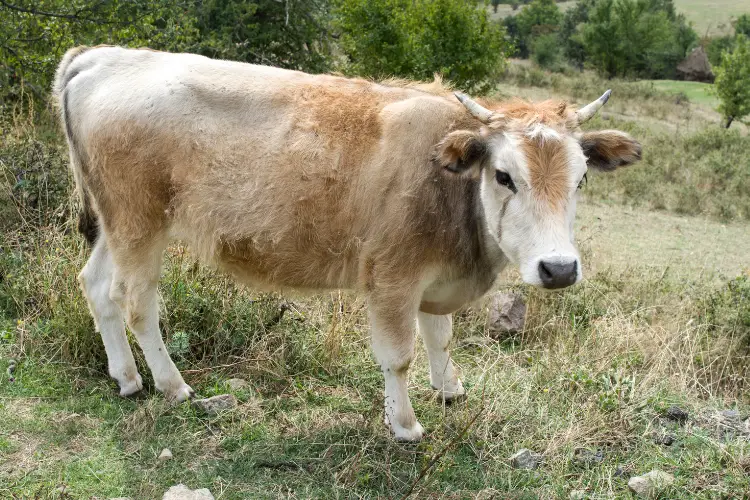
The Shorthorn breed has made a significant impact on crossbreeding programs, enhancing the genetic diversity and performance of various cattle herds.
Their contribution is particularly notable in the development of new composite breeds, where the Shorthorn’s desirable traits are combined with those of other breeds to create superior offspring. The Shorthorn’s influence extends to both beef and dairy sectors, offering a range of benefits:
- Hybrid vigor: Crossbred animals often exhibit improved growth rates, fertility, and overall health.
- Enhanced maternal abilities: Shorthorn genetics contribute to better mothering skills and milk production in crossbred cows.
- Versatility: The adaptability of Shorthorn genetics makes them an excellent choice for different climatic conditions and management systems.
Incorporating Shorthorn genetics into a breeding program can be more art than science, with breeders carefully selecting traits that complement their existing herds.
The proximity of breeding operations to established Shorthorn programs can facilitate access to top-tier genetics, as seen in Central Alberta’s success with the Black Gold Elevation progeny. The table below illustrates the prevalence of Shorthorn genetics in crossbreeding programs:
| Year | Number of Crossbred Progeny | Notable Composite Breeds |
|---|---|---|
| 2021 | 3200 | Beefmaker, DairyBeef |
| 2022 | 3500 | Red Dairy Cattle |
| 2023 | 3700 | Super Baldy |
The data reflects a steady increase in the use of Shorthorn genetics, underscoring their value in creating robust and productive cattle. As breeders continue to experiment with different genetic combinations, the Shorthorn breed remains a cornerstone in the quest for excellence in cattle breeding.
Health and Longevity

Disease Resistance and Health Issues
Shorthorn cattle are renowned for their robust health and disease resistance, traits that have been carefully honed over generations. Longevity and productivity are hallmarks of the breed, with many animals remaining active in the breeding herd well beyond the average age for cattle.
This resilience translates into significant economic advantages for farmers, as it reduces the need for frequent herd replacements and lowers veterinary costs. One of the notable health advantages of Dairy Shorthorns is their sturdy feet and legs, which are less prone to problems that can lead to lost milk production and additional veterinary expenses.
This characteristic is particularly beneficial, as it contributes to the overall welfare of the herd and the sustainability of dairy operations.
The table below outlines key health traits of Shorthorn cattle:
| Trait | Description |
|---|---|
| Feet and Leg Health | Excellent, with minimal issues |
| Longevity | High, with extended productive lifespan |
| Disease Resistance | Strong, withstanding common bovine ailments |
Life Expectancy and Productive Lifespan
Shorthorn cattle are known for their robust health and longevity, which are critical factors for farmers when considering the economics of cattle rearing. The average lifespan of Shorthorn cattle ranges from 5 to 20 years, depending on various factors such as genetics, environment, and management practices.
This wide range reflects the breed’s adaptability to different conditions and their ability to remain productive over multiple breeding cycles. The productive lifespan of a Shorthorn is also noteworthy. Cows can continue to calve and produce milk well into their teens, while bulls can service herds for many years.
This enduring productivity contributes to the breed’s economic value, as it reduces the need for frequent replacements. The following table outlines the typical size and lifespan of Shorthorn cattle:
| Gender | Weight Range | Lifespan |
|---|---|---|
| Bull | 1,800 to 2,200 pounds | 5-20 years |
| Cow | 1,400 to 1,500 pounds | 5-20 years |
Health and disease resistance are additional aspects that influence the longevity of Shorthorn cattle. Their resilience to common bovine diseases means lower veterinary costs and less intervention, which is highly beneficial for sustainable farming practices.
Management of Common Veterinary Challenges

Effective management of veterinary challenges in Shorthorn cattle is pivotal to maintaining a healthy and productive herd. Early treatment and preventative measures are key strategies for addressing common health issues.
The Beef Shorthorn Cattle Society emphasizes the significant impact of diseases such as abortion, infertility, and unthriftiness on a suckler herd. Proper record-keeping is an essential aspect of managing health in cattle.
Detailed records enable timely interventions and provide valuable data for analyzing trends and improving herd health strategies. For instance, recording treatments during calving season ensures clarity and aids in decision-making processes.
Veterinary interventions are often necessary to maintain the health status of the herd. Regular health checks and tests, such as semen analysis, should be scheduled to ensure the cattle meet the required health standards. It is also important to conduct these tests with enough lead time for re-testing if needed, ensuring that cattle are fit for sale or breeding without delay.
Conclusion
The Shorthorn cattle breed, with its origins in England, has proven to be an exceptional dual-purpose breed, valued for both its high-quality meat and substantial milk production. Their adaptability to various climates, coupled with a calm temperament and ease of handling, makes them a preferred choice for farmers and ranchers.
With medium to large size, distinctive coat colors, and good feed efficiency, Shorthorns play a significant role in the beef industry, particularly in regions like Georgia. Their contribution to crossbreeding programs, especially with breeds like the Red Angus, further underscores their importance in enhancing meat quality and other desirable traits in cattle.
As we conclude this comprehensive profile, it is clear that the Shorthorn cattle’s versatility and overall performance make them a breed that continues to be cherished and sought after in the agricultural community.
FAQs:
What is the origin of Shorthorn cattle?
Shorthorn cattle originated in England and have been developed over centuries to become the breed we know today.
What are the distinctive physical characteristics of Shorthorn cattle?
Shorthorn cattle are known for their distinctive red, white, or roan coat coloration, medium to large size, and good feed efficiency.
How does the temperament of Shorthorn cattle affect their handling?
Shorthorn cattle are renowned for their docile temperament, which makes them easier to handle, reduces stress, and improves safety for both animals and handlers.
What are the economic benefits of raising Shorthorn cattle?
Shorthorn cattle offer dual-purpose utility for both meat and milk production, making them economically valuable for farmers. Their adaptability and popularity in the market also contribute to their economic worth.
How long do Shorthorn cattle typically live, and what are their health characteristics?
Shorthorn cattle have a good life expectancy and are known for their resistance to common diseases, which can save farmers on veterinary expenses and replacement costs.
What role do Shorthorn cattle play in crossbreeding programs?
Shorthorn cattle are often used in crossbreeding programs to improve the quality of other breeds due to their desirable traits such as meat quality, milk production, and adaptability.

